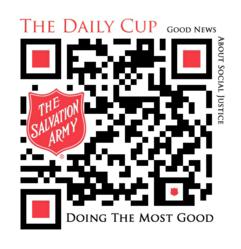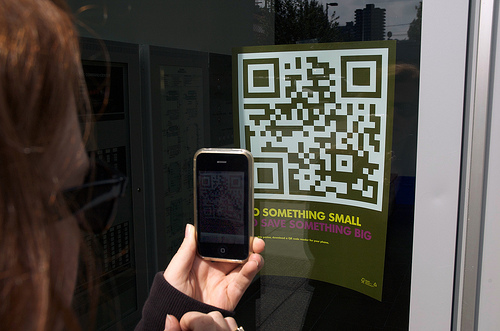QR Codes Raise Awareness, Donations for Nonprofit Organizations
 It’s not just large corporations and flashy product lines that are turning to QR (Quick Response) mobile applications for data capture and information distribution. Savvy nonprofit organizations are taking advantage of this emerging technology, as well.
It’s not just large corporations and flashy product lines that are turning to QR (Quick Response) mobile applications for data capture and information distribution. Savvy nonprofit organizations are taking advantage of this emerging technology, as well.
One prominent example is the recent Salvation Army’s mobile application for their Daily Cup Social Justice program. The nonprofit’s campaign was named as a finalist for Effective Mobile Marketing Awards in the “Most Effective Mobile Charity Campaign/Solution” category.
The charity QR code features information on social justice issues, through blog feed, an embedded video, and a feedback form for volunteer inquiries and donation options.
“We exceeded expectations with over 190,000 downloads within the first six weeks, a 6% response to ‘Donate $10 Now’ and a 3.9% response to volunteer submissions,” said Bernica Kalan, Marketing Director at GetJar, who helped to implement to QR code campaign.
Other nonprofits, both large and small, are using QR codes as part of their marketing and outreach. The Juvenile Diabetes Research Foundation (JDRF) uses QR codes in their brochures at their offline fundraising events to invite participants to join promotional walks, become volunteer advocates and for lobbying efforts.
The nonprofit Baltimore-based National Aquarium uses QR codes on their exhibits. The QR codes lead to a video about the marine life, providing an  interactive and educational element for visitors.
interactive and educational element for visitors.
The Big Wild uses QR codes to help educate and involve citizens in their cause by printing a QR code on a poster. In this case, the QR code led to a mobile-friendly petition to generate interest and support. The result was greater media attention for the conservation-based Canadian nonprofit.
(Image used with permission from The Big Wild.)
Some nonprofits are using QR codes in newsletter and other publications Readers who scan the QR code are taken to a webpage where they can sign up for e-Newsletters or online magazines.
There are many other potential applications for nonprofit organizations, as well. For example, a museum could put a QR code next to each displayed piece to allow people to view a video that allows for a visual experience. Flyers and posters could utilize the QR code to when they need to share more information than would possibly fit on the printed piece. Art Walk patrons could scan QR codes to learn more about the individual artists and their work. Aquariums and other attractions might choose to provide the history behind the exhibit or the unique characteristics of the display. Tourism, colleges… the options are virtually (pun intended!) unlimited.
One of the most compelling reasons for nonprofit organizations to use QR codes in their print promotions, whether brochures, posters, newsletters or even annual reports, is that they help drive an online response to donations. Besides being 100% trackable, online donations are convenient for donors and tend to produce better results than direct mail response.
Like any method of marketing and communications, it’s paramount that nonprofit organizations keep their primary demographic in mind. QR codes will most likely be used by the under-35 crowd, but will continue to catch on with older constituents. For those not familiar with QR codes, they do tend to at least spark curiosity. As usage of smart phones continues to span the generations, a QR code application for nonprofit organizations is certainly something to consider.
Related articles:
Quick Response in an Emergency: How QR Codes Help Keep Students Safer at School
Chinese market opportunities for Han Xin Code
Microsoft Tag® and Build-A-Bear Workshop® Bring Plush Bears to Life through Kinectimals for Xbox 360
YouTube Videos that illustrate how to make labels and bar codes:
1. Create a QR Code for business cards
2. QR Code for Signs and Flyers
3. Create a UPC Bar code
4. Make sheets of bar code labels
{jcomments on}
